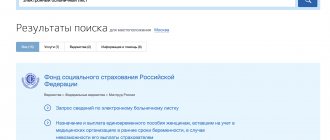Every officially employed person, in case of injury, illness or other health problems, goes to the clinic at his place of residence to open a sick leave certificate, which is important for both the employee and the employer and is confirmation of absence due to illness.
The law requires each employee to provide sick leave, otherwise absence from work is considered absenteeism. This official form also gives the right to be treated at home and receive benefits during forced “rest.”
What is the difference from regular sick leave?
Regular sick leave opens and closes within one month. For example, an employee fell ill on November 5, and went to work on the 15th and provided sick leave, opened on November 5 and closed on November 14. This is a regular sick leave.
If the certificate of incapacity for work is open in one month and closed in another, then this is a rolling sick leave. For example, an employee fell ill on May 28 and returned to work on June 10.
Typically, rolling leave refers to sick leave opened in December and closed in January. But this may also apply to other months of the year.
Recalculation of benefits: how to apply
Reflect the calculation of benefits based on the data you have on your sick leave certificate.
An example of filling out a sick leave certificate by an employer can be found here.
As soon as the employee brings the certificate, take from him an application for recalculation of benefits.
Find out what form to fill out such an application in the Ready-made solution from ConsultantPlus. Trial access to the legal system is free.
Complete the recalculation as a separate document and attach it to the sick leave certificate. There is no need to make any changes to the certificate of incapacity for work. The register will need to be sent to the FSS for recalculation (see Specification, approved by the FSS on November 16, 2018) so that the fund recalculates and pays its part of the benefit.
In case you need to correct mistakes on a hospital note, we also have an article.
And a small nuance regarding personal income tax. Income in the form of additional payment of benefits is considered received on the day the money is issued (transferred) to the employee. Since this is sick leave, the tax must be transferred by the end of the month of payment of the additional payment, in our example - by July 31. At the same time, in 6-NDFL, the accountant will reflect the first part of the benefit in the calculation for six months, and the July additional payment will already be included in the calculation for 9 months. There is no need to adjust the semi-annual report.
Who can issue a rolling sick leave?
The legislation allows the issuance of sick leave only to licensed medical institutions:
- These can be public clinics or hospitals and private medical centers that have licenses and certificates. Forms must be filled out in accordance with established rules, dates must be accurately and clearly stated.
- The document can also be obtained from a foreign clinic if the employee falls ill during a business trip. In this case, sick leave is issued according to the laws of this country, and upon return it is provided to the personnel department.
The minimum period for which sick leave is opened is 3 days. Even if the employee feels better, he cannot begin his job duties on the second day.
The maximum period for opening a sick leave is a month. If recovery has not occurred during this time, and it is necessary to continue treatment, the head physician of the medical institution gathers a council of doctors, at which the issue of further treatment or closure of sick leave is decided.
Answers to common questions about rolling sick leave
Question #1:
An employee fell ill while on vacation. Will vacation be extended if the employee has taken out sick leave?
Answer:
If we are talking about annual paid leave, then such leave will be extended by the number of days during which the employee was sick. If the employee was on vacation at his own expense, such vacation will not be extended.
Question #2:
Will annual leave be extended if an employee takes sick leave during a vacation due to the illness of a child requiring care?
Answer:
No, the vacation is extended only if the sick leave is issued due to illness or injury of the employee of the enterprise.
When will sick leave be issued?
A sick leave certificate will only be issued to a truly sick person (illness or injury). This does not apply to a person under the influence of drugs or alcohol.
The following situations are also possible:
- If a relative is sick and needs care.
- Health problems due to pregnancy.
- Childbirth is coming.
- The person is in quarantine.
Important! If an employee falls ill during vacation, the vacation can be extended after recovery.
In what cases is a rolling sick leave issued?
If an employee contacts a medical organization, this does not mean that he will automatically receive a certificate of incapacity for work - he must undergo an examination to confirm the fact of the disease. If the doctor does not find any signs of illness, a sick leave certificate is not issued, since there is no reason for this.
The same applies to workers who end up in a clinic due to alcohol, drug or toxic intoxication.
A rolling sick leave certificate will be issued if:
- an employee of the enterprise is ill or injured;
- the citizen is in quarantine;
- a child, spouse or close relative of an employee falls ill and needs to be cared for;
- a woman complains of deteriorating health during pregnancy;
- The employee is going to give birth to a baby soon.
How does payment work?
After recovery, the sick leave is transferred to the accounting department. But no later than six months from the date of termination of the sick leave. Otherwise, benefits will not be accrued.
In accordance with Federal Law No. 255 of 03/09/16, after submitting a certificate of incapacity for work, benefits are accrued within 10 days and issued together with the next salary or advance payment.
Benefit payment calculation
To calculate the payment amount you need to know:
- How many days did the sick leave officially last?
- Official work experience.
- Average wage for one day.
Benefit amount
The amount of the benefit directly depends on the length of service, as well as on the salary of the last two years:
- If the experience is less than 2 years, then provide a certificate from a previous job for correct calculation.
- If the work experience is more than 8 years, then the amount of benefits for one day of sick leave is equal to the average income per day.
- From 5 to 8 years - 80% of average income.
- Up to 5 years - 60% of average income.
- Up to 6 months - payments are calculated according to the minimum wage.
The calculation of rolling sick leave is made using the same formula as for regular sick leave.
The average salary per day is calculated as follows: the annual salary for the two previous years is divided by 730 days. Then it is multiplied by the number of days of sick leave and by a coefficient (0.8; 0.6 or according to the minimum wage).
Let's look at an example
Employee A.A. Petrov provided sick leave, which was opened on December 25, 2022, and closed on January 10, 2022. On January 11, the employee began his official duties. Thus, he was sick for 7 days in December and 10 in January - a total of 17 days.
The amount of his income for the previous 2 years:
- For 2015 - 300 thousand rubles.
- For 2016 - 350 thousand rubles.
Total 650 thousand rubles for two years.
Let's calculate the average income for one working day: 650,000/731=889 rubles. 2016 was a leap year, so you need to divide by 731, not 730. The employee’s work experience is more than 10 years, so his payment per day will be equal to the average income per day. If the total length of service was, for example, 6 years, then the payment per day would be 889 * 0.8 = 711 rubles.
So, the total payment for 17 days of sick leave will be 889 * 17 = 15,113 rubles.
Important! The employee will not receive the entire amount: taxes will be deducted.
"Transitional" sick leave. When should benefits be taken into account?
The amount of compulsory insurance contributions (hereinafter referred to as contributions) that an organization must pay to the budget of the state extra-budgetary fund for social protection of the population of the Republic of Belarus (hereinafter referred to as the Fund's budget) is reduced by the amount of accrued benefits for temporary disability and pregnancy and childbirth (hereinafter referred to as benefits) < 1>. Let's look at a conditional example of how to take into account the costs of paying benefits for “transitionable” certificates of incapacity for work (hereinafter referred to as sick leave).
Situation
On August 3, 2022, the employer was presented with two sick leaves:
— Ivanov A.I. sick leave was issued due to a general illness for the period from July 24 to August 2, 2022;
— Petrova E.S. on the basis of a sick leave issued to her for the period from August 2 to December 5, 2022, she applied to her employer for maternity benefits.
Benefits were assigned to employees on August 7 in the following amounts:
| Employee's full name | Period | Benefit amount, rub. |
| Ivanov A.I. | From 24 to 31 July | 160 |
| From 1 to 2 August | 40 | |
| Total | 200 | |
| Petrova E.S. | From 2 to 31 August | 600 |
| September | 600 | |
| October | 620 | |
| November | 600 | |
| From 1 to 5 December | 100 | |
| Total | 2520 | |
Salaries are paid to employees twice a month <2>:
— 25th — for the first half of the month (advance);
- 14th - final payment for the previous month.
The organization pays contributions to the Fund's budget on a monthly basis.
We assign benefits
In general, sick leave benefits are assigned within 10 days from the date of application . If additional documents (information, information) are required to assign benefits, the period for their assignment may be extended to one month <3>.
In the language of an accountant, to assign a benefit is to determine its size and accrue the calculated amount, i.e. reflect the business transaction in accounting.
In accordance with the accrual principle, business transactions are reflected in accounting and reporting in the reporting period in which they were completed. In the situation under consideration, both benefits were assigned on August 7. Accordingly, an entry is made in accounting under account 69 “Calculations for social insurance and security” in August <4>.
We pay benefits
There are also certain deadlines for the payment of assigned benefits. Thus, sick leave benefits assigned at the place of work are paid on the days provided for the payment of wages <5>.
Let us remind you that, according to labor legislation, wages are paid on the days specified in the collective agreement, agreement or employment contract, but at least twice a month. At the same time, certain categories of employees (for example, with whom contracts have been concluded) can be paid wages at least once a month <6>.
The legislation on benefits does not specify which days are meant: the nearest salary payment date or the salary payment date for the month in which the benefit was accrued.
In publications <7>, representatives of the Fund expressed the opinion that we are talking about the days of salary payment for the month in which the benefit was accrued. These days also include the day of payment of wages for the first half of the month, the so-called advance payment. From this point of view, the benefits accrued to Ivanov A.I. and Petrova E.S. in August, must be paid no later than September 14 , i.e. August payday. In this case, it will not be a violation to pay benefits on the day of the advance - August 25 .
In addition, benefits can be paid on the next payday after their assignment. In our situation, benefits are assigned on August 7, and the next salary payment day is August 14 (salary payment day for July). These benefits can be paid on August 14 . However, in this case, it is necessary to remember that the date of accrual of benefits falls on a different month, and do not take them against the contributions accrued for the month for which the salary is paid. That is, when transferring contributions for July, these benefits do not need to be taken into account. They should be taken into account towards the dues for August. We'll look at this in more detail in the next section. Now regarding the timing of payment of benefits. It should be noted that this option takes into account the interests of employees (benefits are paid as soon as possible). In this case, contributions for July are paid in full. But this requires additional actions from the accountant. Such “carrying over” benefits will have to be paid on a separate statement as payments for August (similar to the payment of vacation pay in the current month).
We take into account the costs of paying benefits
Let us remind you that benefits assigned to employees are paid against accrued contributions <8>.
Contributions for the reporting month that the organization must pay to the Fund's budget are calculated as follows. The amount of contributions accrued for the reporting month is reduced by the amount of benefits expenses incurred in the same month at the expense of the Fund <9>.
Since in our situation the benefits were accrued (i.e. posted to account 69) in August, they are taken to offset the contributions accrued for August.
Let us note that in the employee’s personal account (payslip), the benefit accrued for “rolling over” sick leave is reflected in the month of accrual not in one total amount, but in parts falling on the corresponding months. This is necessary for calculating income tax and providing information on personalized accounting. However, there is no reason to show “carrying over” benefits for one sick leave in accounting as separate transactions relating to different reporting months. In other words, the accrued benefit for one sick leave is one business transaction. In the case under consideration, Ivanov A.I. in August, temporary disability benefits were accrued for the period from July 24 to August 2. His personal account for August will reflect two benefit amounts - 160 and 40 rubles. At the same time, it is unlawful for the part of the benefit accrued for days of temporary disability in July (160 rubles) to be recorded in accounting in July, and the part of the benefit accruing in August (40 rubles) to be reflected in August and, accordingly, these parts of the benefit to be counted against fees for July and August. The entire amount of the benefit (200 rubles) is accepted as credit towards contributions for August
The same approaches are applied when crediting maternity benefits. It is accrued and paid at a time, i.e. immediately for the entire period certified by sick leave <10>. Accordingly, in our case, the entire amount of benefits accrued by Petrova E.S. in August for the period from August 2 to December 5 (RUB 2,520), also counted towards contributions accrued for August .
As a general rule, the organization is obliged to transfer contributions no later than the established payday for the past month, i.e. on the day set for final payment for the past month. If this is a day after the 20th day of the month following the previous one, contributions must be paid no later than the 20th day <11>.
In our situation, salaries for July are paid on August 14. On the specified day, the organization transfers contributions for July to the Fund’s budget, without reducing them by the amount of benefits accrued to A.I. Ivanov. and Petrova E.S. in August. These amounts will be taken into account when paying contributions for August, i.e. September 14 (day of payment of the final payment for August).
If benefits are accepted against accrued contributions before the due time, contributions are not paid in full. The amount of contributions not paid to the Fund's budget on time is considered arrears. In this case, a fine is imposed on the organization and a penalty is charged <12>.
In a situation with “rolling” sick leave, you need to pay attention to the date the benefit was assigned. In accordance with it, the amount of the assigned benefit is reflected in accounting. The period for payment of benefits is also determined in relation to the date of appointment. This can be either the nearest salary payment deadline or the salary payment deadline for the month in which the benefit is assigned. However, in any of these cases, the amount of the benefit is accepted as offset against contributions for the month on which the date of assignment of this benefit falls.
What difficulties arise when paying for temporary sick leave?
Difficulties with calculating and paying for transitional sick leave usually do not arise.
You need to know some nuances:
- A sick leave sheet opened in December and closed after the new year contains at least 2 forms, one of which relates to the new year, and the other to the previous year.
- Sheets can be provided at different times, then payment will be calculated for each form separately.
- If the sick leave is provided with a complete set of forms after the sheet is closed, then the payment will be calculated in the total amount within 10 days from the date of provision of the papers.
What has changed in the payment procedure
In 2022, all benefits for sick leave are assigned and paid by the territorial branch of the Social Insurance Fund, where the employer transfers all the necessary information and documents. An exception is the benefit for the first 3 days of illness or injury, which, as before, is issued from the funds of the employer with whom the employee is employed. Payment is accrued within 10 days after presentation of sick leave. The employee must receive the accrued amount, minus personal income tax, on the next day approved for salary payments (Part 1, Article 15 of Law No. 255-FZ of December 29, 2006).
In addition, the employer still pays out of his own funds and then applies to the Social Insurance Fund for reimbursement of the following payments:
- funeral benefit;
- payment for additional days of care for disabled children;
- disability benefits through interbudgetary transfers.
The FSS directly transfers all other amounts to the employee himself (to an account, card, or sends by postal order).
Transition to electronic sick leave certificates
In 2022, a new federal law No. 86 was issued on the transition from paper sick leave certificates to electronic ones for all medical institutions. This will simplify and speed up the transfer of documents via the Internet to the accounting department and the Social Insurance Fund. The law does not deprive an employee of the right to receive a certificate of incapacity for work in traditional paper form, and in electronic form the papers are sent to the relevant organizations only with voluntary consent.
From July 1, 2022, a smooth transition to electronic hospital clinics and hospitals connected to the Medical Information System began. The sick leave certificate is signed electronically, and the discharged employee is given his number, with which he goes to the accounting department. As soon as the sick leave is closed, at that very second it is transferred to the work organization and the Social Insurance Fund. Using the number in the database, the accountant will find a document with the necessary information for calculating benefits. It is impossible to falsify such a document, since the communication channels through which it is transmitted are reliably protected.
Rolling sick leave is practically no different from regular sick leave, except that it is open in one month and closed in another. You can obtain the document at any licensed medical institution. Calculating and paying disability benefits is not difficult. The only thing you need to be careful with: if you choose a sick leave certificate on paper, then it must be submitted to the accounting department within the time limits established by law.
How quickly the payment will be calculated depends on the employee: the faster the documents are provided, the faster the money will be transferred to the account.
Sick leave: temporary calculation procedure in 2022. What about 2022?
On March 25, 2022, President Vladimir Putin addressed the people in connection with the COVID-19 epidemic.
Among other things, he noted the importance of supporting those who find themselves on sick leave and proposed to consolidate the temporary procedure for calculating sick leave (for the period from April 1 to December 31, 2022) introduced by law dated April 1, 2020 No. 104-FZ. According to it, for a full month of illness, the benefit should be no less than the federal minimum wage (RUB 12,130 in 2022), regardless of the person’s length of service and actual earnings. In 2022, this procedure for calculating sick leave was preserved (Law “On Amendments...” dated December 29, 2020 No. 478-FZ). Only the calculation is now made based on the minimum wage of 12,792 rubles.
See here for details.
This procedure should apply to all cases of disability: illness, child care, quarantine, injury.
When calculating sick leave, an employee needs to proceed as follows:
- calculate the benefit according to the usual rules, taking into account the employee’s earnings and length of service - per full month;
- compare the amount with the minimum wage;
- if it is more, pay the benefit as usual: 3 days at the expense of the employer, the rest through the Social Insurance Fund;
- if less, divide the minimum wage by the number of days in a calendar month of illness and multiply the result by the number of days of sick leave.
If you use regional coefficients, take the minimum wage taking into account the coefficients. If you work part-time (week), pay the allowance calculated from the minimum wage in proportion to the length of working time.
An example of calculating benefits for temporary disability due to illness from ConsultantPlus The average daily earnings of an employee are 666.64 rubles. (which is higher than the average daily earnings determined based on the minimum wage - 398.79 rubles). The employee's insurance experience is 4 years. The amount of daily benefit is 399.98 rubles. (RUB 666.64 x 60%), but cannot be less: See the full example in K+. Trial access is free.
How to pay for sick leave periods
Temporary disability benefits are paid to the employee as a guarantee of earnings lost during the period of illness (clause 2, clause 1, clause 1.1, article 7, clause 5, clause 2, article 8 of the Federal Law of July 16, 1999 No. 165-FZ “On the basics of compulsory social insurance”).
Therefore, benefits cannot be paid twice for the same period. This means that for two sick leaves with overlapping deadlines, benefits need to be paid for only one of them. Let's look at two of the most illustrative situations.








